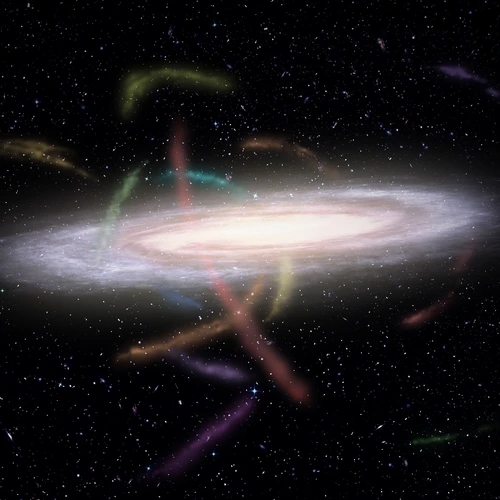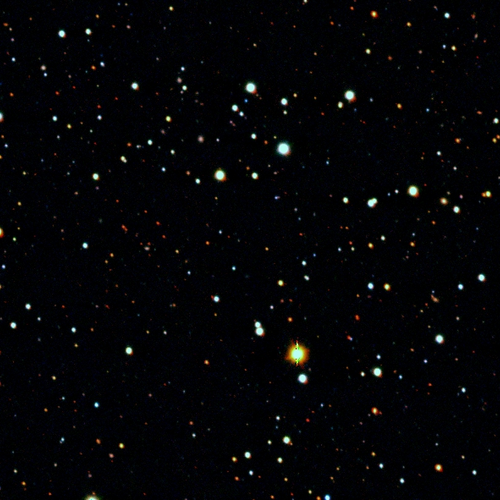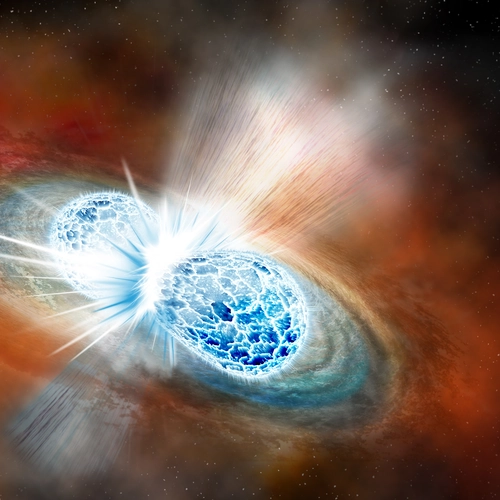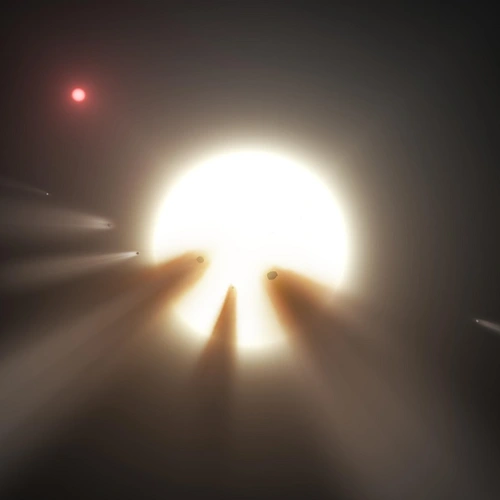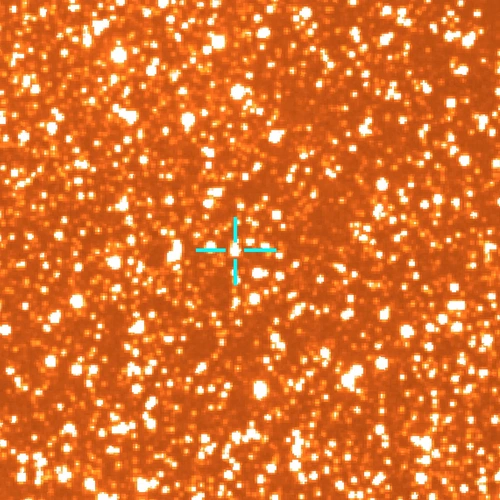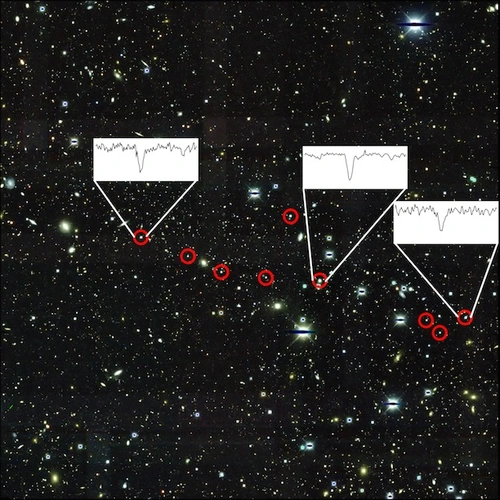Overview
More than 80 percent of the mass of the universe consists of a mysterious non-luminous material known as dark matter. After factoring in another enigma, the repulsive force called dark energy that dominates the universe's expansion, astronomers have a detailed understanding of only 5 percent of the contents of the universe.
The generally accepted theory of dark matter, developed over more than three decades, is that it consists of a yet-to-be-detected fundamental particle that interacts with ordinary matter—protons, neutrons, and electrons—very weakly. The modern incarnation of this theory is named LambdaCDM, for the combination of a cosmological constant (Lambda) and cold dark matter. While LambdaCDM is in remarkable agreement with many aspects of the observed universe, its predictions about galaxies have fared more poorly. Two key predictions are that dark matter should be strongly concentrated toward the centers of galaxies, and that galaxies like the Milky Way should be surrounded by hundreds of much smaller dwarf galaxies. Neither of these predictions has been borne out by observations. By making improved measurements of the internal kinematics of dwarf galaxies, Simon has shown that these discrepancies are much less serious than previously thought.
Since the discovery in 2005 of the smallest galaxies known, the ultra-faint dwarfs, Simon and colleagues have used these extreme systems as laboratories for studying both dark matter and the evolutionary history of the first galaxies. They have demonstrated that the ultra-faint dwarfs are the oldest, most metal-poor, and most dark matter-dominated galaxies yet found, providing new insight into topics ranging from the search for the dark matter particle to the explosions of the first stars. In the course of this work, they also discovered extremely metal-poor stars in dwarf galaxies. This finding led Simon to begin a new survey using the Magellan telescopes to identify and study the chemical abundance patterns of a much larger sample of the lowest metallicity stars in nearby dwarfs. This effort will produce a statistically significant number of such stars beyond the Milky Way for the first time, enabling observational constraints on the yields of the first supernovae, the sites of production of the heaviest elements, and the formation of the stellar halo of our galaxy.
In addition to dark matter and metal-poor stars, Simon's interests span all aspects of galaxies in the nearby universe, including supernovae, chemical evolution, star formation, and the stellar initial mass function of the Milky Way's closest neighbors, as well as the search for new dwarf galaxies in the Local Group and beyond.
Since the discovery in 2005 of the smallest galaxies known, the ultra-faint dwarfs, Simon and colleagues have used these extreme systems as laboratories for studying both dark matter and the evolutionary history of the first galaxies. They have demonstrated that the ultra-faint dwarfs are the oldest, most metal-poor, and most dark matter-dominated galaxies yet found, providing new insight into topics ranging from the search for the dark matter particle to the explosions of the first stars. In the course of this work, they also discovered extremely metal-poor stars in dwarf galaxies. This finding led Simon to begin a new survey using the Magellan telescopes to identify and study the chemical abundance patterns of a much larger sample of the lowest metallicity stars in nearby dwarfs. This effort will produce a statistically significant number of such stars beyond the Milky Way for the first time, enabling observational constraints on the yields of the first supernovae, the sites of production of the heaviest elements, and the formation of the stellar halo of our galaxy.
In addition to dark matter and metal-poor stars, Simon's interests span all aspects of galaxies in the nearby universe, including supernovae, chemical evolution, star formation, and the stellar initial mass function of the Milky Way's closest neighbors, as well as the search for new dwarf galaxies in the Local Group and beyond.
CV
- Ph.D. in Astrophysics, 2005, University of California - Berkeley
- M.A. in Astrophysics, 2000, University of California - Berkeley
- B.S. in Physics, 1998, Stanford University

